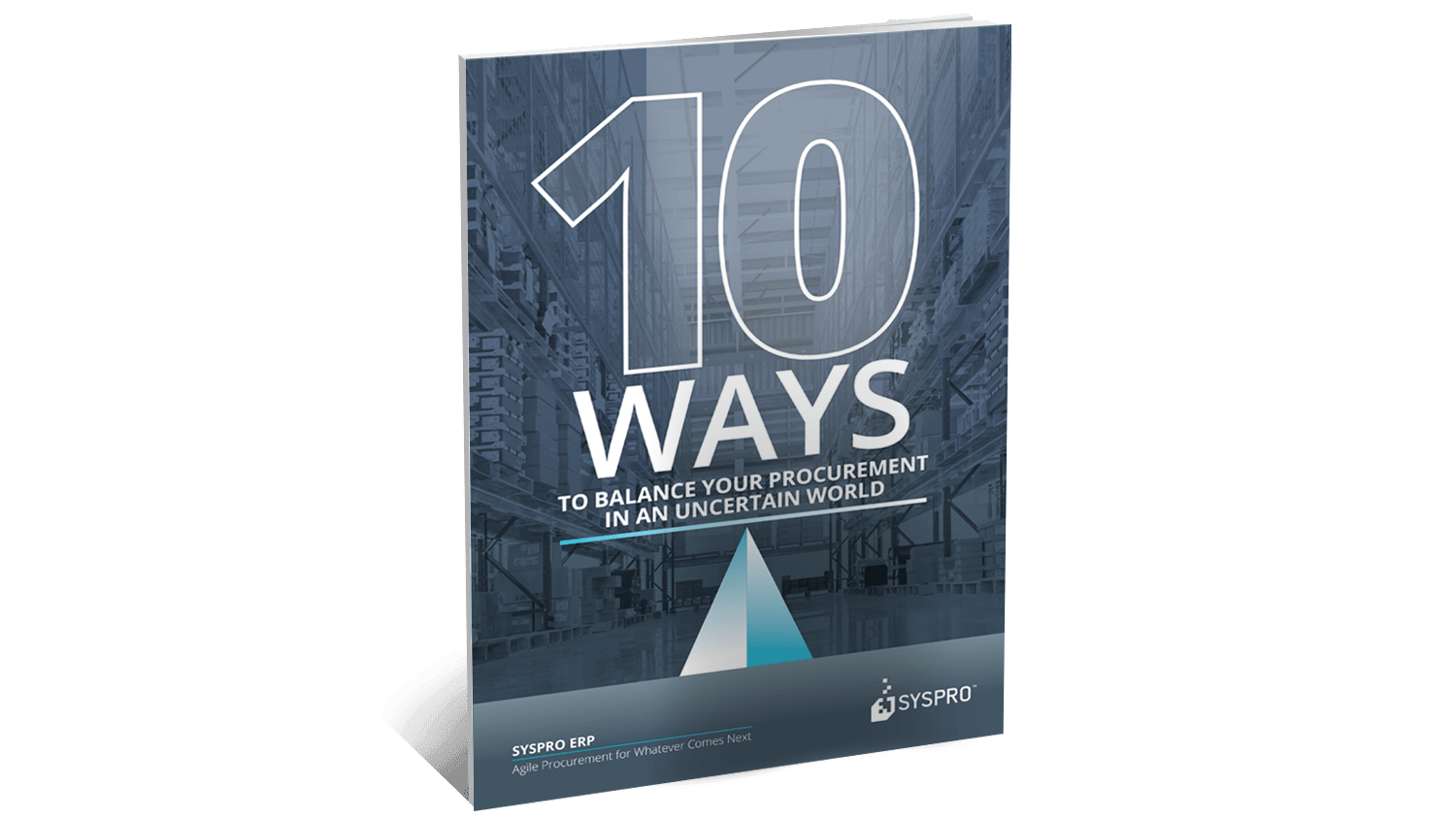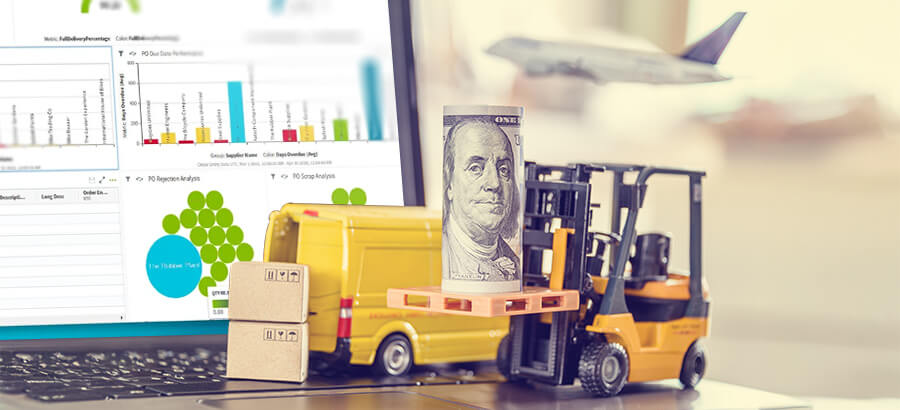I apologize for using the cliché ‘new normal’ but we really do have to accept that the practices and expectations of procurement in the modern enterprise have changed and may never be the same again. As a result of the disruptions caused by COVID, procurement is no longer a clerical and transactional role but needs to step up to show how it can be an important channel in dealing with customers and suppliers.
The focus of procurement is expanding beyond costs
For a while, there has been a call for procurement to move away from just focusing on cost reduction, but the Coronavirus has accelerated that movement as traditional supply chains shut down. Procurement professionals had to quickly refocus to look at alternate sourcing options and business needs, not just costs. That has opened up the scope for procurement to consider its role in business innovation and supporting the organization in news ways.
Supply chains are not as robust as we thought they were. And no matter how strong the relationship or the contracts in place, the pandemic has shown just how critical agility is in the procurement process, especially when the supply chain is literally shut down overnight.
Procurement needs some new strategies to remain relevant if it is to help manufacturers and distributors navigate the future with greater agility and confidence.
1. Maintain continuity with an integrated online procurement portal
In the past, procurement professionals relied on long-term contracts with suppliers to ensure delivery and cost stability. Many of suppliers no longer exist. So how do you maintain continuity of supply?
You have to ensure procurement staff can work remotely, and that communication with suppliers can be done online via a buying portal that is integrated with the rest of your business. In this way, you can improve the transparency and availability of information while minimizing documentation and limiting the risk of fraud.
Using a buying portal allows suppliers to respond to tenders online, buyers can make informed procurement decisions quickly and easily by comparing offerings from different suppliers. With an automated RFQ (Request for Quote) capability, buyers can provide exact requirements, and suppliers can submit their proposals with pricing information and supporting documentation.
2. Improving procurement governance, risk, and compliance
Procurement leaders know by now that they need to diversify their supplier base and implement dual-sourcing policies to reduce the risk of shortages, increase the robustness of supplier networks and ensure demand is met when the unexpected occurs. The reliability of supply has become a key requirement.
To implement this kind of strategic sourcing policies, the procurement department needs to maintain control of the requisition process and align procurement processes with the organizations’ strategic goals, ensuring this is done according to regulatory standards:
- The problem of dark purchasing, which occurs when items are purchased outside of standardized processes, can be reduced with a requisition system that provides the necessary controls and visibility to prevent overspending. It also requires multiple approved suppliers capable of delivering on short notice.
- With purchase order functionality, spending limits can be controlled. Using automated workflows a purchase request is routed through various managers with associated authority levels until the final stage when the request is converted into a purchase order.
- Integrating the purchase and requisition process with a material requirements planning system allows you to enforce approved suppliers in the purchasing process and maintain predetermined sourcing policies.
- Layering AI over purchasing systems lets you detect anomalies and issue alerts if discrepancies are found, for example, to identify fraudulent activities.
- You can also use AI to measure supplier performance. Usually, performance reporting provides information such as supplier maturity, lead times and capacity. However, with AI you get additional insights with the ability to predict the likelihood of a supplier delivering by a certain date.
3. Maintain customer service by ensuring the availability of materials, parts and stock items
The other side of procurement’s responsibility is to help maintain customer service by ensuring the availability of raw materials, parts, and other stock items. Complex decisions need to be made about which items you should hold and stocking levels of those items at each stocking location. Stockholding is a trade-off between cash flow and customer service – never running out of raw materials to ensure 100% customer service will probably bankrupt the business. Additionally, you need to know when to replenish, how much, and where:
- Inventory management software, linked to procurement, production, and delivery systems, allows you to (relatively) accurately forecast demand, identify stock availability, establish supplier lead times, cost and material requirements, contingency stock requirements, and warehouse capacity constraints. This is available in real-time with visibility into inventory balances, open purchase orders, work orders and open sales orders at any point in the process. And this is exactly where the Sales, Production, and Finance teams need to agree on the strategy to manage the cash flow.
- Inventory forecasting enables you to produce accurate forecasts based on sales history and provides the tools to measure the quality of your forecasts.
- Another tool that supports procurement management is material requirements planning (MRP). MRP uses projected and actual demand and supply to assist in planning and creating realistic production, purchasing, and supply transfer schedules. It also identifies potential capacity constraints and maintains optimal stock holdings in a multi-site and multi-warehouse environment.
With these advanced scheduling, forecasting, and requirements planning tools, you can accurately determine purchasing requirements and hedge against obsolesce of raw materials stock. These tools will also help the organization to not be in a position of overstocking of raw materials, which will quickly consume all free cash.
4. Leverage Traceability
Managing the supply chain also means also handling the reverse product flow. Procurement’s involvement in return logistics should enable it to track quality data on products and their ingredients, from purchasing through to inspection, manufacturing, stocking and sales. This can then be used to track supplier performance, which is a requirement of the ISO 9000 Quality Management System.
In regulated industries with health and safety protocols, you need this quality tracking data to ensure organizational compliance and be able to respond quickly to product recalls. Traceability also provides greater governance over the procurement process.
5. Ensure profitability
The traditional responsibilities of procurement – phoning suppliers for deals, ordering materials, and reducing input costs – still apply, but they are only one of the areas that procurement needs to be concerned about.
You still need to manage cash flow, provide efficient control of supplier invoices, and payments on the best possible terms. You need an accounts receivable and payable system that turns these tedious and time-consuming processes into a manageable piece of your corporate puzzle. You will also need a tool to improve the visibility of imported goods along the supply chain and track landed costs accurately.
By applying AI to cash flow management, you can set up rules to provide more accurate cash flow projections.
Where is procurement going?
By limiting manual intervention through automation, standardizing policies for engaging suppliers, enabling automatic selection of suppliers in the purchasing process, and allowing for joint decision-making on suppliers, the procurement function can implement corporate policy and improve governance, all the while also improving the visibility of the full selection and purchasing process.
Today, more than ever, Procurement is a finely tuned balancing act that supports your overall business strategy and helps you satisfy the expectations of an increasingly demanding customer. Finding that balance is the key to avoiding the potential of empty shelves, lost sales, dissatisfied customers and plunging profits. There are many tools available in your ERP system that the organization can utilize to improve these critical business processes. One of the most important elements of your ERP system is the “one view” of the critical business data.
Over recent years we are hearing more and more about VUCA environments, referring to a time of Volatility, Uncertainty, Complexity, and Ambiguity. With one letter changed, the word Vuka in the Zulu language means ‘wake up’, and that is what procurement needs to do at the start of the 2020s. The new world we live in now is very different from the old world of pre-COVID times.
Get the free ebook on 10 ways to balance your procurement in these uncertain times.








